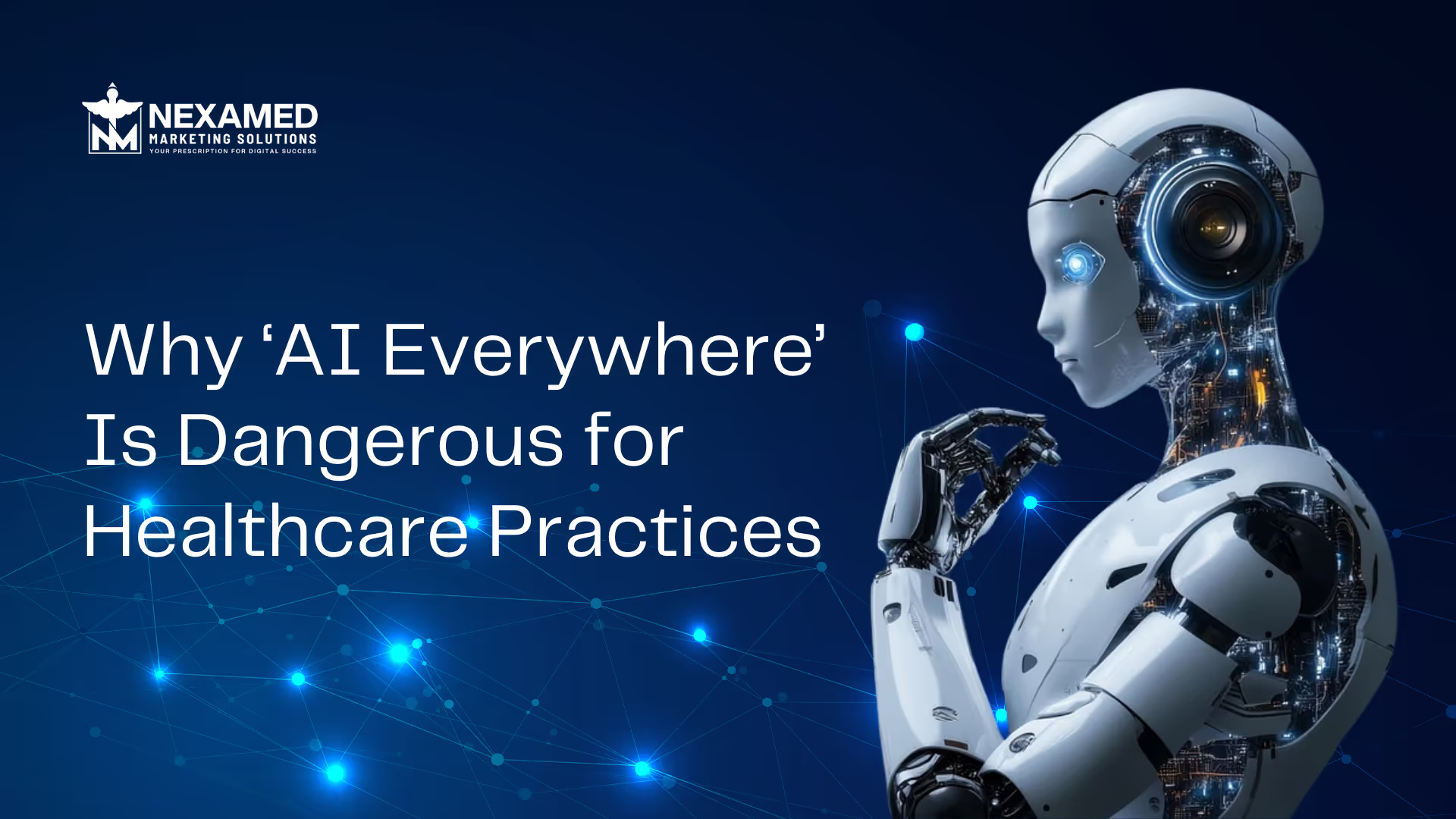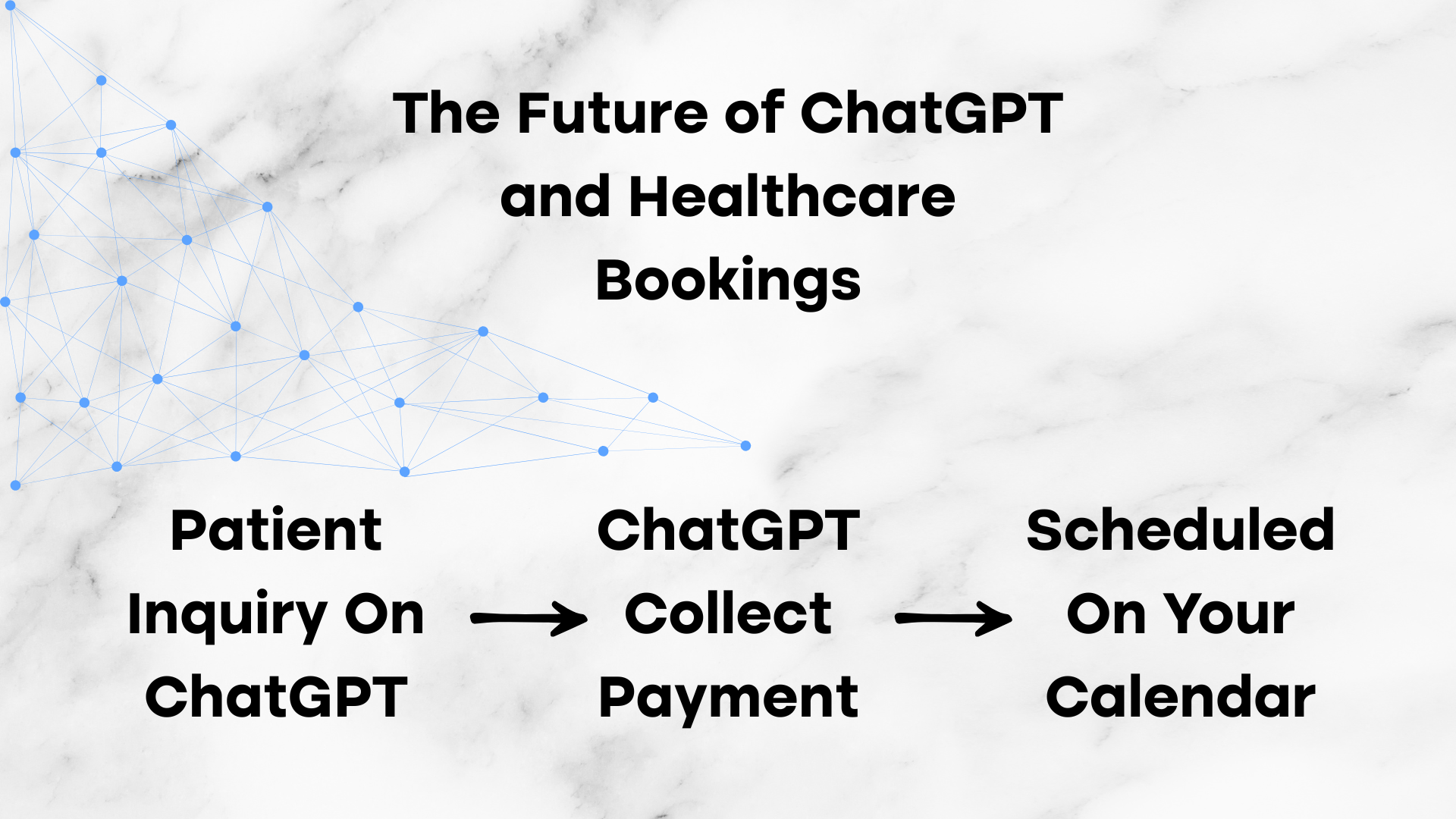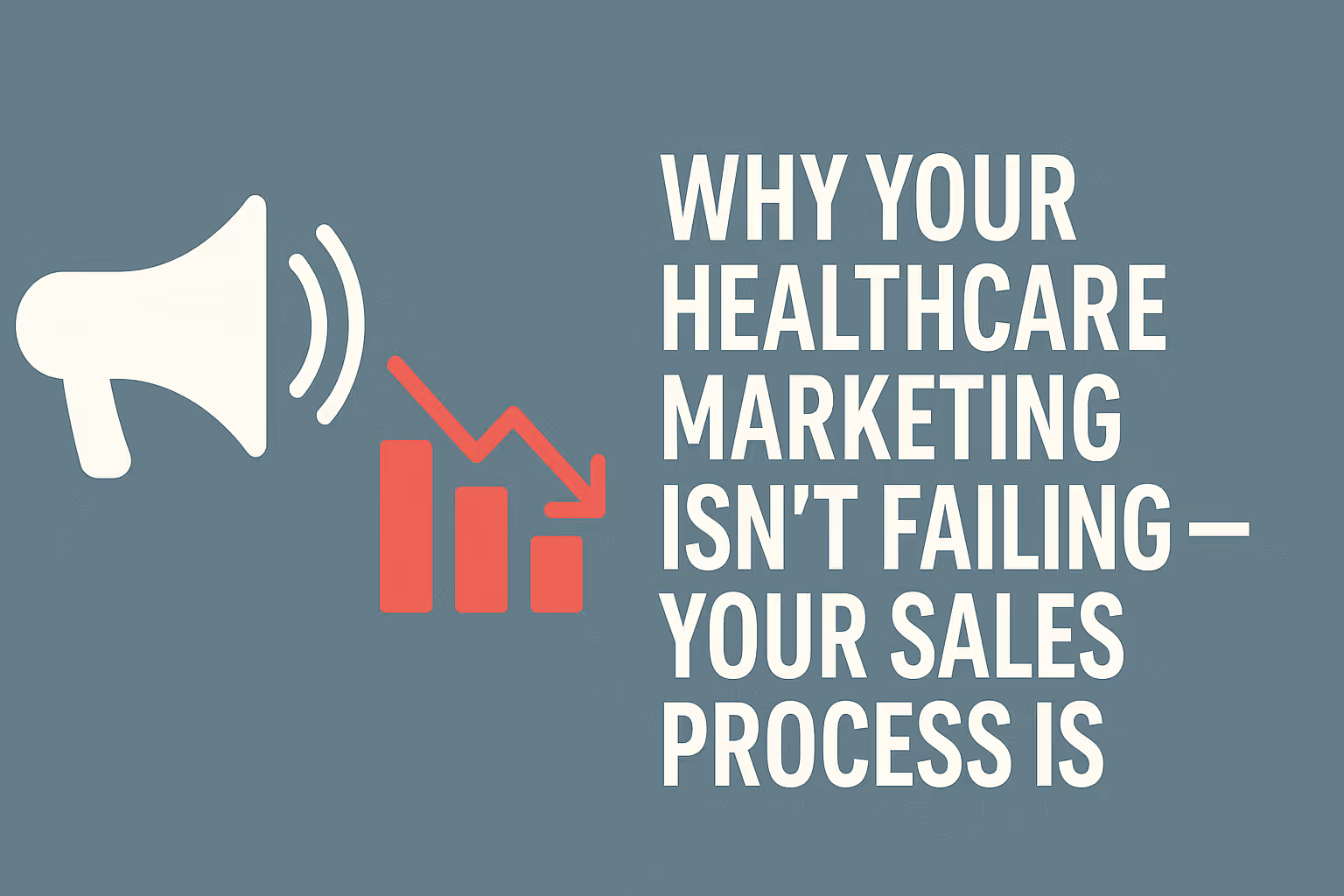Read more Articles
Keep up to date with medspa marketing strategies.

Imagine walking into your healthcare provider’s office and realizing that artificial intelligence is quietly shaping every aspect of your experience, from scheduling your appointment to even managing your treatment. As AI models like ChatGPT and Google’s Gemini have gained ground, healthcare practices are racing to integrate AI into every corner of patient care—but is the rush putting us at risk?
On the surface, faster workflows and fewer administrative headaches sound irresistible. However, in healthcare, convenience can come at a high cost. AI is powerful, not infallible—applied incorrectly, it creates risks that algorithms can’t undo.
In this blog, we will discuss the rise of AI in healthcare, the reasons why healthcare providers are increasingly adopting it, and the issues with AI in healthcare that have arisen. Stay tuned for insightful information that could transform your understanding of AI's role in healthcare.
Let’s begin
When ChatGPT launched in late 2022, it reshaped the digital landscape almost overnight, delivering human-like responses to complex questions in seconds. While AI’s potential was clear from the start, few could have predicted how deeply it would embed itself into everyday life in just a few short years.
In healthcare, early skepticism centered on AI’s tendency to make mistakes, overlook nuances, or misinterpret critical context. Yet, as the technology rapidly evolved—becoming exponentially more capable than those first-generation models—entrepreneurs and medical professionals began to see new possibilities.
By early to mid-2023, the first credible healthcare-focused AI SaaS companies were appearing. Their tools handled simple, non-clinical tasks and carefully avoided patient health information to sidestep regulatory landmines. But as the algorithms improved, so did their ambitions. The industry began shifting from experimental trials to real-world, patient-facing applications, ushering in both unprecedented opportunities and complex new risks.
The next time you book a doctor’s appointment, pay attention to the process. Chances are, you won’t make it all the way through without an AI-based system stepping in—sending you automated reminders, confirming your visit, or even answering your questions through a chatbot.
For many providers, AI’s appeal is clear: speed, low setup and operating costs, and round-the-clock support for repetitive tasks. With staffing shortages and turnover, supplementing human labor with a system that works 24/7 is tempting.
But is it really as cost-effective and efficient as it seems?
To illustrate the potential cost-effectiveness of AI, consider a midsize clinic implementing an AI-driven scheduling system. Before the introduction of AI, the clinic employed three full-time administrative staff members dedicated to appointment bookings and reminders, incurring approximately $150,000 in annual salaries alone. By adopting an AI system, the clinic reduces its staffing needs to just one person, reallocating the other roles to more patient-focused tasks and saving about $100,000 each year while maintaining a high level of service quality.
These benefits explain why the adoption of AI in healthcare has surged. It offers:
For overburdened clinics, these advantages are hard to ignore. However, the same traits that make AI attractive—its speed, scale, and autonomy—can also introduce new problems when applied without limits. And that’s where the conversation gets more complicated.
AI is a tool—nothing more, nothing less. And like any tool, it works best in the right hands, not as a wholesale replacement for people. Swapping out your sales team for AI because it’s “cheaper” might seem like a win on paper, but in reality, the lost conversions, missed nuances, and lack of human connection will cost you far more than you save.
The problem we see today is that many providers have grown far too comfortable letting AI run critical parts of their business. They see “AI-generated SOAP notes” or “AI marketing copy” and assume it’s an instant upgrade, happily paying $90 for a program to churn out patient-facing materials. The reality? Most of the time, it’s not as good as you think it is. The emails, the text messages, the headlines—they may be technically correct, but patients can tell when it’s machine-made. And when it looks and feels generic, your brand loses credibility.
The quickest way to spot AI-written content is to read it. Does it sound eerily similar to every other clinic's messaging, with the same vague promises and overused phrases? If so, you're not just blending in—you're disappearing behind the sea of similar content.
AI writes in patterns, and those patterns lack the personality that builds lasting brand loyalty. We can think of this generic style as 'Clinic-Speak,' a tone that lacks distinctiveness and fails to engage. On the other hand, what you should aim for is 'CareCraft,' a brand voice that resonates with warmth and individuality, turning casual interactions into memorable experiences.
Consider this: if five medspas in the same city all use ChatGPT to write their website copy, and one invests in having a real person craft every word, guess which one will stand out? The brand with a distinctive identity is the one that patients remember and trust.
That’s why I advise against using AI to write your patient-facing copy. Your website, your emails, your text campaigns—these should be crafted by humans who understand your story, your values, and your patients. AI can be helpful for brainstorming ideas or outlining concepts, but the “human touch” is not optional in healthcare marketing. In a world where trust is currency, personality is the edge you can’t afford to automate.
This is perhaps the most glaring flaw in the AI craze—machines can’t feel. No matter how sophisticated the model, AI will never experience emotion. So why would any healthcare provider put an emotionless algorithm in a front-facing role with patients? It’s a decision that baffles me every time I see it.
Healthcare, at its core, is an industry built on empathy. Patients aren’t just buying a service; they’re placing their health, trust, and often their fears in your hands. That requires compassion, understanding, and human connection—things no AI can authentically deliver.
When AI is placed in all patient-facing roles, several problems emerge:
AI can answer questions. It can process data. But it cannot reassure, empathize, or inspire confidence. In high-value, emotionally sensitive areas of healthcare, replacing human connection with AI isn’t just risky—it’s bad business.
As mentioned earlier, many clinics and healthcare brands were hesitant to adopt AI in 2022 due to its susceptibility to errors. Yet in just a few short years, the industry went from “AI makes too many errors” to “every business should have AI”. That shift happened in barely three years, and should be a cause for question.
Let’s be clear: I’m not anti-AI. I use it daily for research, brainstorming, and streamlining my own workflow, including while writing this blog. But I won’t pretend it’s flawless, and neither should you. If you’re in a situation where precision is non-negotiable, why would you hand that responsibility to something that isn’t 100% accurate?
AI in healthcare is still in its infancy. While we haven’t yet seen a landmark malpractice case tied directly to AI errors, it would be naïve to think it will never happen. And when that day comes, the financial and reputational fallout for the clinic involved will be massive.
AI should be kept in its lane. It is excellent for recording calls, transcribing notes, and organizing information, but not issuing medical recommendations or giving direct advice to patients. When using AI for these tasks, it is crucial to consider regulatory requirements such as HIPAA, which governs the handling of patient information in healthcare settings. Adhering to these regulations ensures that AI is implemented in a compliant and legally sound manner, safeguarding both the clinic and patient data.
Once someone becomes your patient, they should have your number, not a bot’s. If they have a question about their medication, a side effect, or a symptom, they should speak with a qualified healthcare professional. Because in healthcare, 'close enough' isn't good enough.
Just because certain patient-facing uses of AI are off the table doesn’t mean the technology has no place in your clinic. In fact, AI has numerous powerful applications that can help you scale, streamline, and strengthen your operations, without sacrificing the human connection that patients value.
Many of the most effective AI applications in healthcare are data-driven. This means they use the information you provide—such as patient demographics, appointment histories, clinical notes, or marketing metrics—to generate insights and automate processes behind the scenes. They may not be directly answering phones or speaking with patients, but in many cases, they deliver even greater value by freeing your team to focus on what they do best: patient care.
When implemented correctly, AI can become a silent partner in your practice, working tirelessly in the background to optimize efficiency, reduce errors, and uncover opportunities you might otherwise miss.
Most practices underestimate the value of the data they already have. If your clinic uses an EHR or CRM, you likely have the ability to export detailed patient profiles—including service history, payment patterns, demographic information, and more.
By running this data through a carefully selected, HIPAA-compliant AI platform that meets stringent criteria and using well-crafted prompts, you can unlock powerful insights. When selecting an AI platform, consider factors such as the vendor's track record in data security, ease of integration with existing systems, and the ability to provide ongoing support. It's also essential to verify that the AI service complies with all necessary healthcare regulations to ensure both safety and legality. By doing so, you might instruct the AI to:
The possibilities are nearly endless. This kind of behind-the-scenes AI work doesn’t replace human interaction—it enhances it. You still make the final judgment on when to reach out, how to present an upsell, and how to handle objections.
Because this process occurs without direct patient communication, it minimizes the risk of AI providing incorrect or misleading information, while still providing actionable insights that can directly impact revenue growth.
For any healthcare provider, a strong online reputation is non-negotiable. Reviews not only build trust with potential patients but also play a critical role in helping your clinic appear higher in Google’s local map pack. The challenge? Consistently obtaining high-quality reviews that go beyond a simple star rating.
This is where AI can be a valuable ally. AI-powered healthcare automation is gaining traction because it can request reviews without directly discussing medical services, reducing compliance concerns and leaving less room for critical errors.
Here’s how to implement it effectively:
The goal isn’t just to collect more reviews—it’s to collect better ones. By prompting patients for detailed, long-form feedback, you give future patients more context and signal to Google that your reviews are authentic and valuable. In turn, this boosts your visibility in local search results, making it easier for new patients to find and trust your clinic.
At Nexamed Marketing, one of our most effective strategies is running targeted surveys for past patients to gather actionable insights about a clinic’s performance. The questions are carefully crafted to extract the exact information we need—whether it’s about patient satisfaction, service preferences, or areas for improvement.
If you’re not working with us (though you should), you can still set up a similar system to have AI interpret your data for you. This works much like the patient profile analysis method: you collect the information, then upload it into a HIPAA-compliant AI platform for review.
Here’s how to get started:
By letting AI sift through and summarize the responses, you save hours of manual review while still getting a clear, data-backed picture of your clinic’s strengths and weaknesses. This method works because it keeps AI in the background—interpreting data, not interacting with patients—ensuring accuracy and compliance while giving you insights you can act on immediately.
If you’ve read this far, first, thank you. Second, understand that my goal isn’t to discourage AI adoption in healthcare. I’m a strong believer in its potential. But I also believe the industry has moved too quickly, embracing AI without fully asking the most important question: Is it ready?
AI is a tool—nothing more, nothing less. Like any tool, it has strengths and limitations. Using AI in healthcare is like using a flathead screwdriver on a Phillips screw: it often works, but sometimes things go wrong.
The reality is that, in the right contexts—such as data analysis, administrative automation, and reputation management—AI can provide significant value without compromising patient trust or safety. But in areas that demand empathy, nuance, and absolute accuracy, it’s still not a true substitute for human judgment.
Within the next five years, I believe AI will be far more integrated into healthcare than we can currently imagine. And by that time, it may truly be ready to shoulder more of the responsibility we’re so eager to hand over today. Until then, the smartest path forward is a balanced one, leveraging AI where it excels and keeping humans at the forefront where they matter most.
So let's champion a future that combines the best of both worlds—human touch and AI Brilliance. As we step forward, let this become our guiding principle, ensuring that innovation does not outpace empathy.
If you are looking for healthcare marketing, contact us today.
We build predictable patient acquisition systems that deliver real, trackable ROI for medspas.
Keep up to date with medspa marketing strategies.

